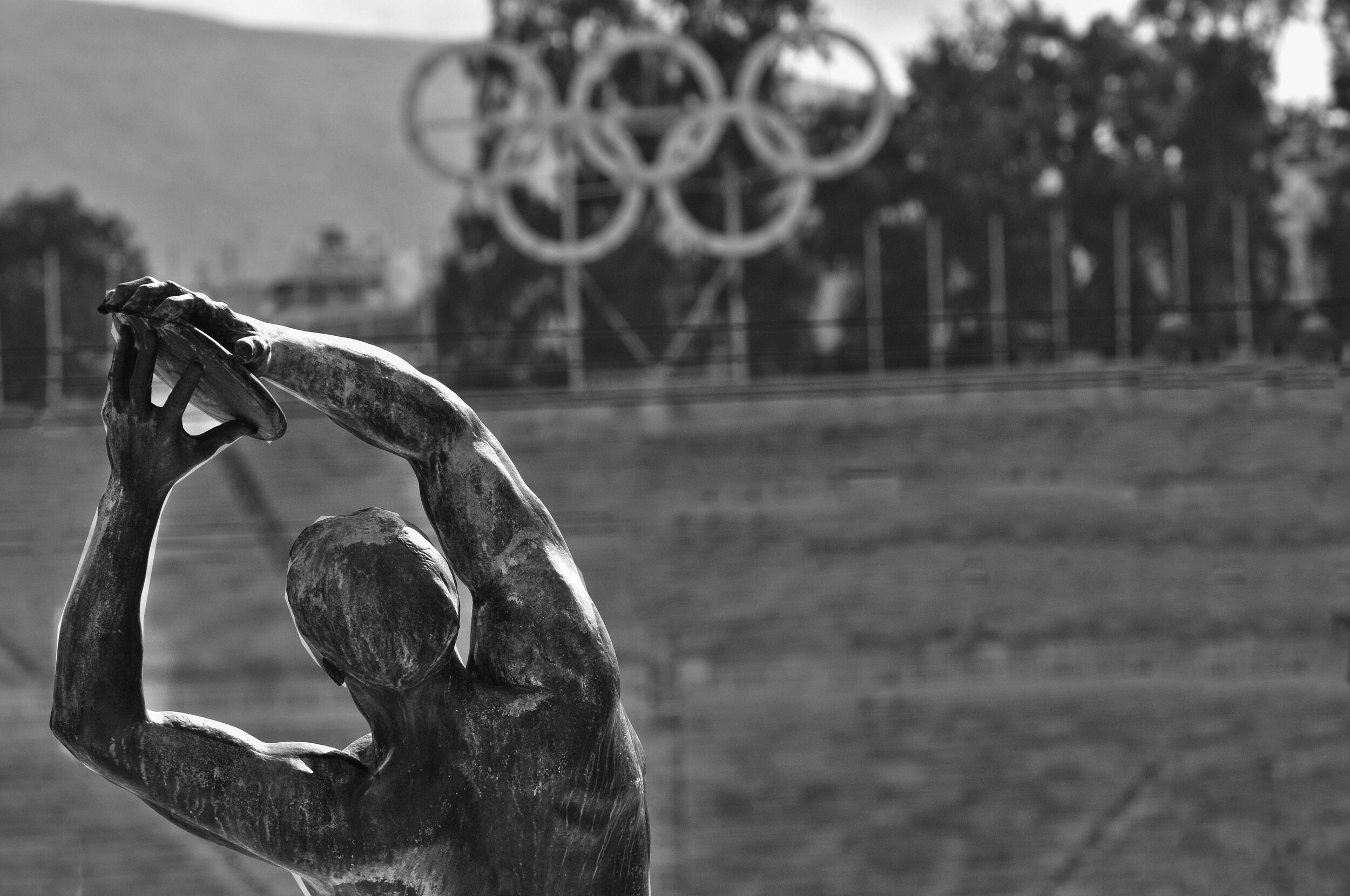Share This Article
It’s 2020. An Olympic year. Come the end of July, the world’s attention will turn to Tokyo to watch the best of the best compete for Olympic glory. An estimated 11,000 athletes representing 206 nations are expected to compete.[1] But what does it take to reach such a high level of athletic achievement? Of course, there are many factors that can lead to successful sporting performances, but one in particular that has an interesting multifaceted impact is that of perfectionism.
Perfectionism is the rejection of any standard short of perfect; it is different to simply just trying to be your best.[2] It can be present in any aspect of your life, whether it’s attempting to attain perfect school grades, work, sporting performances or even relationships. Whilst it is generally viewed as a desirable attribute, it has both positive and negative facets. On one hand, it can be seen as a positive characteristic that motivates an individual to strive for success. However, it can also lead to a preoccupation with mistakes and the development of self-defeating behaviours, actually making it harder to achieve goals.[2]
Looking specifically at the sporting world, perfectionism can play a dichotomous role in the sporting performance of athletes. Whilst striving for perfection is considered to be beneficial to sporting performance, aspects of this trait may hinder it at the same time. In an investigation of the psychological characteristics of Olympic Champions, perfectionism was identified as an important factor to compete at the highest levels of sport.[3] This suggests that perfectionism holds a significant role in sporting performance, however the presence of negative traits can simultaneously undermine these performances. Considering this paradoxical role, it can be difficult to understand the role perfectionism truly plays. Insight to the role of perfectionism will help coaches and young athletes to optimise sporting performance and maintain a healthy mindset.
Perfectionism can be broken down into both healthy and unhealthy dimensions.[4][5] Perfectionism, of course, will not be healthy or unhealthy under all circumstances across all time. For different individuals, it will manifest in different ways with varying implications in different contexts.[6] In addition, perfectionism can be attributed either internally or externally, with these dimensions being called self-oriented perfectionism (SOP) and socially prescribed perfectionism (SPP).[7]
Healthy perfectionism
Healthy perfectionism is characterised by having a self-oriented striving for excellence, high personal standards, positive reinforcement, the pursuit of realistic goals and an awareness of personal and situational limits.[8] It is considered as beneficial to athletes in order to perform at an elite level.[3] Healthy perfectionists are able to focus on self-improvement and positive self-evaluation; and faced with challenges, they generally maintain a positive attitude, attempt to establish the reason for a failure and self-reflect in order to be able to adjust their performance in the future to avoid making similar mistakes.[9]
Furthermore, healthy perfectionism is aligned with the positive aspects of self-oriented perfectionism, which is the self-imposed establishment of exceptionally high standards and the tendency to strive towards excellence.[10] Both healthy perfectionism and SOP have been demonstrated to be highly motivating, associated with optimal performance, self-confidence, hope for success and a reduced likelihood of athlete burnout.[11]
Unhealthy perfectionism
On the other hand, unhealthy perfectionism is characterised by negative reactions to and fear of failure, concern over mistakes, doubts about actions, exaggerated responses to setbacks and a chronic dissatisfaction or uncertainty about performance.[12] It hinders rather than assists sporting performance. Unhealthy perfectionists set excessively high performance standards and tend to perceive mistakes as representing total failure.[13] Furthermore, they are often overly demanding of themselves and others, defining their self-worth through performance.[14] They often find it difficult to recover from setbacks and are frequently discouraged by their failures because they feel a lack of control over the outcome.[9] Due to these negative characteristics, unhealthy perfectionism has been associated with negative consequences including anxiety, low self-esteem and a fear of negative evaluation.[15]
Socially prescribed perfectionism (SPP) is correlated with the unhealthy characteristics of perfectionism. It relates to the external pressure and expectations that athletes can experience from family members, coaches, teammates and friends etc. Differing from SOP, (self-imposed perfectionism), SPP is concerned with striving for extremely high standards in order to meet the expectations of others. Athletes with high levels of SPP were found to be correlated with the lowest levels of wellbeing in comparison to athletes with other levels of perfectionism.[6] The presence of SPP therefore appears to have a negative influence on sporting performance.
Overall impacts on sporting performance
With an understanding of the healthy and unhealthy facets of perfectionism, its impacts on sporting performance factors such as achievement motivation, athlete burnout and competitive anxiety, can be better examined.
Achievement motivation is an athlete’s drive for success. It can be divided into two segments: hope of success and fear of failure.[16] Healthy perfectionism is correlated more closely with hope of success, whereas unhealthy perfectionism is closely associated with fear of failure.[17]
Athlete burnout is defined as the “psychological, emotional, and physical withdrawal from a formerly pursued and enjoyable sport as a result of excessive stress which acts on the athlete over time”.[18] It has been correlated with perfectionism and symptoms include a reduced sense of accomplishment, physical and emotional exhaustion and sport devaluation.[19]
Perfectionistic athletes tend to strive for excessively high standards and the effort required in maintaining high standards of performance means they are often more susceptible to burnout.[20] Unhealthy perfectionism has been positively correlated with symptoms of athlete burnout, whilst athletes with healthy perfectionism have been demonstrated to have lower levels of burnout symptoms.[21]
Competitive anxiety is related to an athlete’s feelings of potential failure and awareness of their bodily symptoms (i.e. fight or flight) and can be contrasted with self-confidence. Sport competitions are a conversion of an athlete’s training and experience into their best performances and often result in increased competitive anxiety. Healthy perfectionism has been demonstrated to correlate with increased self-confidence and decreased competitive anxiety in comparison to unhealthy perfectionism, suggesting that high levels of healthy perfectionism in an athlete can have potentially positive impacts on sporting performance.[22]
Perfectionism is therefore not necessarily negative for sporting performance; only certain aspects are unhealthy. Healthy perfectionism is related to hope of success, lower levels of athlete burnout symptoms and increased self-confidence, all of which have positive outcomes on sporting performance. However, unhealthy perfectionism is associated with fear of failure, higher rates of athlete burnout and increased competitive anxiety, which in turn have detrimental impacts on sporting performance.
Finding the right levels of perfectionism
It appears that athletes with high healthy perfectionistic tendencies appear to perform better than athletes with unhealthy perfectionistic tendencies. If negative aspects of perfectionism such as fear of failure, unrealistic goals and competitive anxiety can be separated from the positive aspects including hope of success, achievable goals and self-confidence, athletes will be able to perform better.
How then, can these healthy perfectionistic tendencies be cultivated in athletes? Parents, coaches and teammates all play an important role in the development of perfectionism in young athletes. The development of young athletes’ perfectionistic tendencies are influenced by their perceptions of their parents’ perfectionism.[23] Whilst healthy perfectionists view coaches and teammates as a positive source of encouragement for hard work and achievement, unhealthy perfectionists acknowledge their importance; yet often consider them to be a source of pressure to perform well.[9] This has the potential to influence the development of young athletes’ socially prescribed perfectionism.
The social environment of young athletes therefore has a significant impact on their perfectionistic tendencies. If athletes’ parents, coaches and teammates exhibit healthy perfectionistic tendencies, this will encourage the development of healthy perfectionism in the athletes, which will lead to improved performance. Furthermore, if athletes can learn to work with their perfectionism in their sporting context by embracing their healthy perfectionistic tendencies and recognising and managing their unhealthy perfectionistic tendencies, they can reduce the negative consequences such as athlete burnout and competitive anxiety.
Conclusion
Perfectionism has a significant impact on the sporting performance of athletes, in both positive and negative ways. Obviously, to reach what many would consider the pinnacle of sporting achievement, the Olympics, many young athletes will believe that they constantly have to strive for utter perfection. However, it is healthier and more beneficial to consider the types of perfectionism that one exhibits and work to nurture the healthy facets, whilst managing the unhealthy facets; this should actually improve sporting performance.
Having an awareness of one’s perfectionistic tendencies can be beneficial: not only for sporting performance but can be translated into everyday life. Consider how you approach your everyday tasks, work or studies – are you a perfectionist? How can you harness your own perfectionism in order to be the best that you can be?
Image: Pexels
[1] https://www.nbcnews.com/news/world/tokyo-2020-summer-olympics-everything-you-need-know-n849301
[2] https://www.goodtherapy.org/learn-about-therapy/issues/perfectionism
[3] Gould, D., Dieffenbach, K., & Moffett, A. (2002). Psychological characteristics and their development in Olympic champions. Journal of Applied Sport Psychology, 14, 172-204.
[4] Frost, R.O., Marten, P., Lahart, C., & Rosenblate, R. (1990). The dimensions of perfectionism. Cognitive Therapy and Research, 14, 15-34.
[5] Stoeber, J., & Otto, K. (2006). Positive conceptions of perfectionism: Approaches, evidence, challenges. Personality and Social Psychology Review, 10, 295-319.
[6] Gaudreau, P., & Verner-Filion, J. (2012). Dispositional perfectionism and well-being: A test of the 2X2 model of perfectionism in the sport domain. Sport, Exercise, and Performance Psychology, 1, 29-43.
[7] Hewitt, P.L., & Flett, G.L. (1991). Perfectionism in the self and social contexts: Conceptualisation, assessment, and association with psychopathology. Journal of personality and social psychology, 60, 456-470.
[8] Slade, P.D., & Owens, R.G. (1998). A dual process model of perfectionism based on reinforcement theory. Behaviour Modification, 22, 372-390.
[9] Gotwals, J.K., & Spencer-Cavaliere, N. (2014). Intercollegiate perfectionistic athletes’ perspectives on achievement: Contributions to the understanding and assessment of perfectionism in sport. International Journal of Sport Psychology, 45(4), 271-297.
[10] Curran, T. (2014). The relationship between multidimensional perfectionism and passion in junior athletes. International Journal of Sport Psychology, 45(4), 369-384.
[11] Hill, A.P., Hall, H.K., & Appleton, P.R. (2010a). Perfectionism and athlete burnout in junior elite athletes: The mediating role of coping tendencies. Anxiety, Stress & Coping, 23, 415-430.
[12] Stoeber, J., Stoll, O., Pescheck, E., & Otto, K., (2008). Perfectionism and achievement goals in athletes: relations with approach and avoidance orientations in mastery and performance goals. Psychology of Sport and Exercise, 9, 102-121.
[13] Burns, D.D. (1980) The perfectionist’s script for self-defeat. Psychology Today, 14(6), 34-52.
[14] Slaney, R.B., Ashby, J.S., & Trippi, J. (1995). Perfectionism: Its measurement and career relevance. Journal of Career Assessment, 3, 279-297.
[15] Stoeber, J., & Becker, C. (2008). Perfectionism, achievement motives, and attribution of success and failure in female soccer players. International Journal of Psychology, 43(6), 980-987.
[16] DeCharms, R., & Davé, P.N. (1965). Hope of success, fear of failure, subjective probability, and risk-taking behaviour. Journal of Personality and Social Psychology, 1, 558-568.
[17] Frost, R.O., & Henderson, K.J. (1991). Perfectionism and reactions to athletic competition. Journal of Sport and Exercise Psychology, 13, 323-335.
[18] Smith, R.E. (1986). Toward a cognitive-affective model of athletic burnout. Journal of Sport Psychology, 8, 36-50.
[19] Madigan, D.J., Stoeber, J., & Passfield, L. (2016). Perfectionism and changes in athlete burnout over three months: Interactive effects of personal standards and evaluative concerns perfectionism. Psychology of Sport and Exercise, 26, 32-39.
[20] Chen, L.H., Chen, M., Kee, Y.H, & Tsai, Y. (2008). Relation of perfectionism with athletes’ burnout: further examination. Perceptual and Motor Skills, 106, 811-820.
[21] Gotwals, J.K. (2011). Perfectionism and Burnout within Intercollegiate Sport: A Person-Oriented Approach. The Sport Psychologist, 25, 489-510.
[22] Koivula, N., Hassmén, P. & Fallby, J. (2002). Self-esteem and perfectionism in elite athletes: effects on competitive anxiety and self-confidence. Personality and Individual Differences, 32, 865-875.
[23] Appleton, P.R., Hall, H.K., & Hill, A.P. (2010). Family patterns of perfectionism: An examination of elite junior athletes and their parents. Psychology of Sport and Exercise, 11, 363-371.




